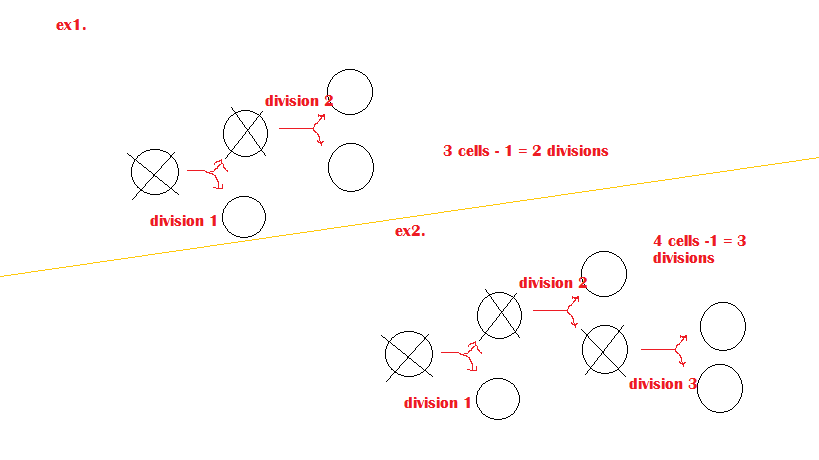In case of Mitotic Division, we say that if the total number of cells formed by mitotic divisions are $x$, then counting from the first cell onwards, we get $x-1$ divisions ($N$)
$N = x-1$
This is fairly logical to me
However, to find total number of meiotic divisions for $x$ cells, we use the formula $x/4$ (In questions where we are supposed to find total number of divisions required for forming some number of seeds or pollen grains)
Shouldn't the formula be $N = (x-1)/3$ (Using the same logic as used for the mitosis formula)?


2^ncells afterndivisions $\endgroup$